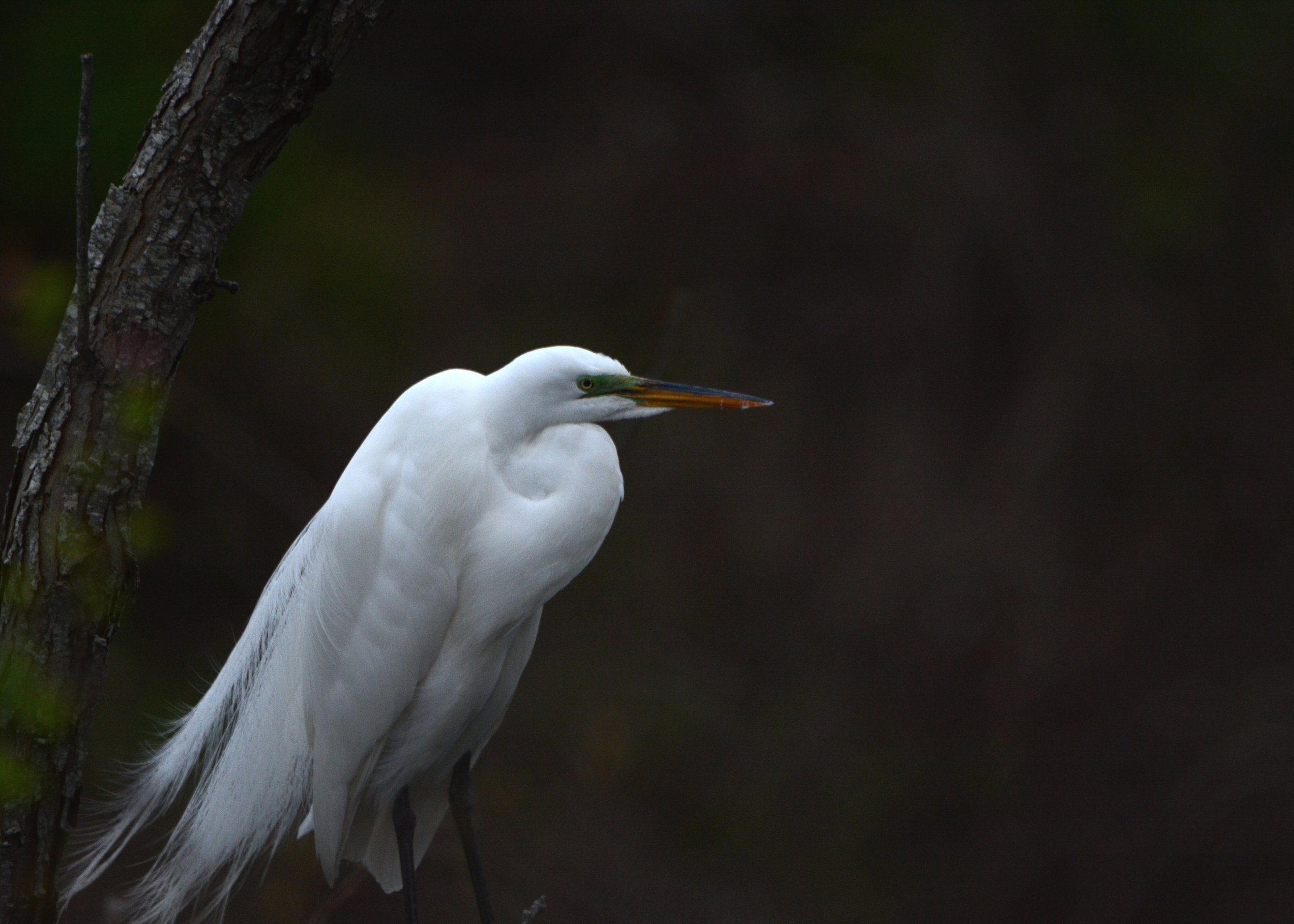Christmas Bird Count 2023/2024 Results Are In
Great egret, photo by Jay Rand
Every year between December 14 and January 5, bird enthusiasts across the country grab their binoculars, bundle up, and brave the weather to participate in the annual wildlife survey known as the Christmas Bird Count (CBC). The CBC is conducted by over 70,000 observers divided up across 2,000 territories in 17 countries.
Here on Long Island, we have 10 territories, one of which is a 15-mile radius known as the Quogue-Water Mill count. This year marked the 75th Annual Quogue-Water Mill Christmas Bird Count, and the birds came out to celebrate. In fact, participants saw 13,908 individual birds in just one day!
This year’s count involved 28 individuals across five teams. They spotted 109 different species, 22 of which have been seen every single year for all 75 years of the count. They also had a few special encounters, seeing or hearing several uncommon birds like the orange-crowned warbler, house wren, northern saw-whet owl, and the black-legged kittiwake, which was observed in December for just the third time in the Count’s history!
Over time, the data collected provides us with valuable information about the status of avian populations locally, regionally, and globally. Group director of environmental education Steve Biasetti, who has been participating in this Count since 1993 and has been the official compiler since 2004, has been analyzing the data and highlighted a few trends for us:
TRENDING UP - During the first 57 years of the Count, the bald eagle and the wild turkey were scarcely recorded. The common raven and turkey vulture were absent entirely. Since 2006, these four species have been seen much more regularly.
TRENDING DOWN - A few species who were formerly regularly recorded have become much less regular in recent years. For example, the eastern meadowlark was found on every Count from 1949 to 2007, but has been missed nine times since then, and every year for the past six years. Although not as regularly recorded, the northern bobwhite is another species trending downward. It has been recorded 40 times on the Count, but only once since 2005.
While the Count this year was positive in terms of the number of participants and the number of species seen, the number of individual birds recorded is relatively low. In fact, it is the third-lowest number since 1975. Continuing this recent troubling trend, the three lowest Quogue-Water Mill Counts since 1975 are 2021 (11,968), 2018 (12,748), and 2023 (13,908).
All of this data helps track the long-term health and status of bird populations, informs strategies to protect birds and their habitats, and helps identify environmental issues with implications for people as well.
Thank you to everyone who participated in this year’s Count!

